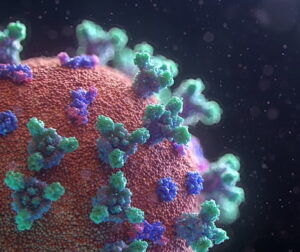Alaskapox Overview
Alaskapox is a recently discovered virus from the orthopoxvirus genus family (viruses obtained by human contact with animals). The disease is mainly known for causing skin lesions.
The Alaska Department of Health sent out a notice of the virus. The Centers for Disease Control and Prevention (CDC) epidemiologist Julia Rogers, who has been assigned to the Alaska Division of Public Health, stated, “Orthopoxviruses are zoonotic viruses, meaning that they circulate primarily within animal populations and occasionally spill over into humans.”
While it shares similarities with other orthopoxviruses like the variola virus (smallpox) and monkeypox, Alaskapox is still a mystery, with only a handful of cases reported.

Alaskapox Cases
The first individuals to acquire the disease were in Fairbanks, Alaska, in 2015. Since then, only seven other cases have been documented as of February 2024, and all of them are in Alaska, most notably in the city of Fairbanks, which is perplexing.
Symptoms and Treatments
Symptoms typically involve one or more skin lesions resembling bumps or swelling accompanied by swollen lymph nodes. Additionally, joint or muscle pain may accompany it. Some cases involve the lesion persisting for six months or more, while others are resolved within weeks.
So far, there has been only one fatality in 2023, but this was an individual with an underlying health condition who succumbed to the virus. No specific treatment exists, and recovery relies on the body’s immune response, indicating that those with more healthy immune systems stand a better chance of recovering early.
Ongoing Research
Much research is required, but scientists suspect small mammals like voles and flying squirrels might be carriers, although the transmission process between animals and humans is unclear. While close contact seems a possibility, further investigation is still needed.
Also, the extent of the virus’s geographic distribution and potential for broader spread is undetermined.
Preventive Measures
Given the lack of current information, practicing general hygiene as we did with COVID-19 is recommended, especially in Alaska. Frequent handwashing and avoiding contact with sick animals remains prudent, and handling wild animals or keeping them as pets is not recommended. If you experience unexplained skin lesions, particularly if you’ve been in areas where Alaskapox is known to occur, consult your doctor promptly!
Looking to the Future
Continued research is crucial to understand the virus’s biology, transmission dynamics, and potential for wider spreading of the disease, and developing diagnostic tools and potential treatments would be vital for effective management. Public health awareness campaigns educating individuals about Alaskapox and preventive measures should be enacted.
Summary
Like other diseases, scientists suspect Alaskapox was acquired through animal contact; however, the virus appears rare. At least at this time, vigilance and ongoing research are crucial to ensure preparedness for future outcomes. Consult your healthcare provider or local public health department for accurate and up-to-date information if you have concerns.
While the virus remains a mystery, ongoing research will undoubtedly contribute to better preventative care and lead to a solution, such as a vaccine. We have to wait and see!

